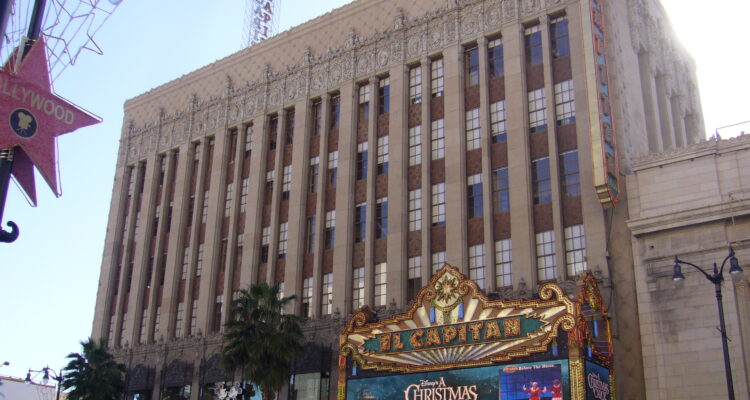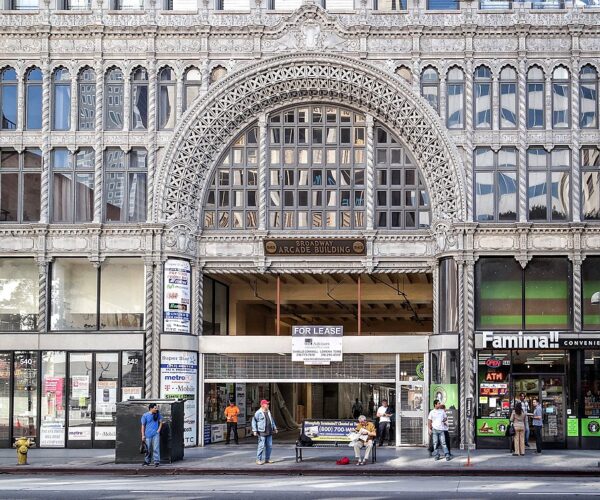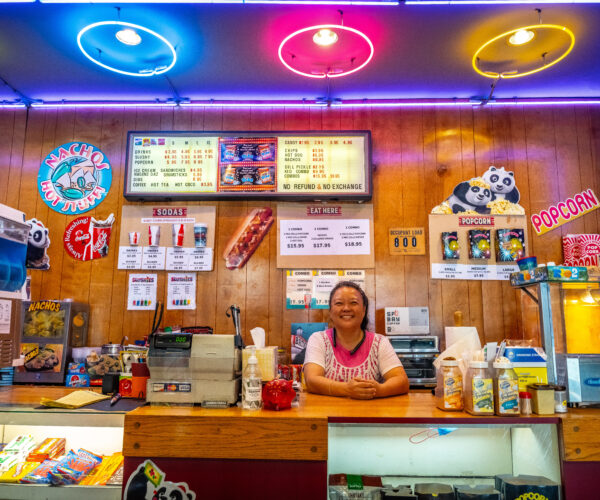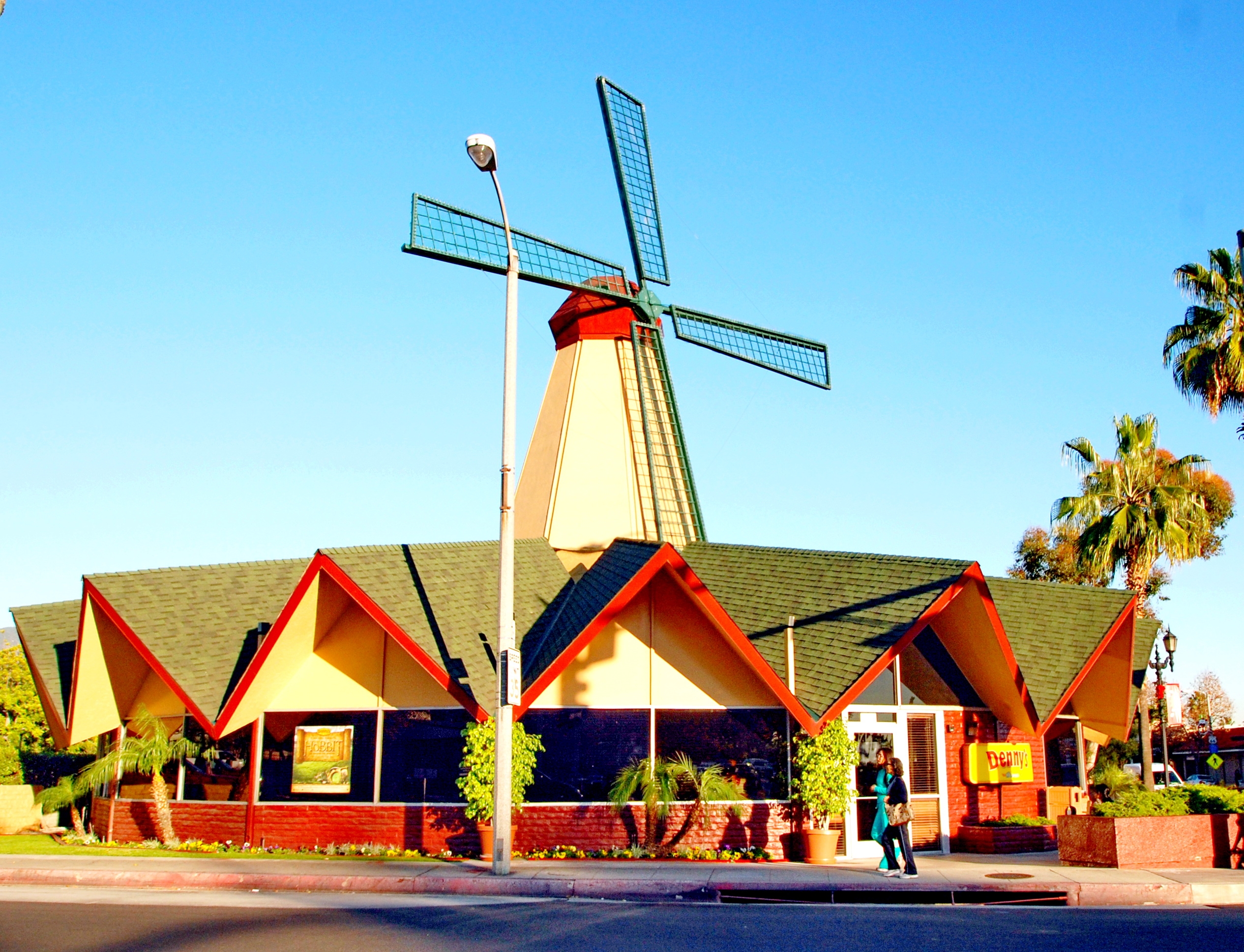
Place
El Capitan Theatre and Office Building
The El Capitan Theatre and Office Building is the third of four major theatres constructed by prominent real estate developer C. E. Toberman, known as the “Father of Hollywood.” The six-story building was designed in the elaborate Spanish Baroque style by the renowned firm of Morgan, Walls, & Clements, who incorporated retail and office space into the upper floors. Noted theatre architect G. Albert Lansburgh designed the elaborate interior.
Place Details
Address
Get directions
Architects
Year
Style
Decade
Attributes
Community
The El Capitan Theatre and Office Building is the third of four major theatres constructed by prominent real estate developer C. E. Toberman, known as the “Father of Hollywood.”
The six-story building was designed in the elaborate Spanish Baroque style by the renowned firm of Morgan, Walls, & Clements, who incorporated retail and office space into the upper floors. Noted theatre architect G. Albert Lansburgh designed the elaborate interior.
The ground-floor façade features intricately framed windows, while the elaborate outer lobby of the theatre is decorated with painted Baroque detailing. Other features include unique second-floor retail display windows, also framed in ornamental cast iron. These displays were meant to be easily viewed from across the street.
The El Capitan Theatre opened in 1926 as a playhouse and was one of the premier dramatic stages in the area throughout the 1920s and most of the 1930s, hosting over 120 plays. The 1,550-seat theatre didn’t screen its first movie until 1941, when it hosted the world premiere of Citizen Kane.
The following year, the venue was converted to a first-run movie theatre, changing its name to the Paramount and undergoing a major remodeling. The new Streamline Moderne look featured an extensive use of drapes, which largely masked – but did not destroy – most of the 1926 décor.
Though operating under several different owners and a number of marquee and signage changes, the Paramount continued as a first-run theatre for almost fifty years before closing in 1988.
Despite extensive renovations over the years, many of the El Capitan’s original features remain intact. In 1989, at the urging of Hollywood preservationists, new owner Walt Disney Studios and Pacific Theatres undertook an extensive two-year rehabilitation of the building, including the return of its original name.
The theatre reopened in 1991 with 998 seats and has since been the showcase for Disney motion pictures. Screenings are often preceded by live stage show productions, most using the theatre’s Wurlitzer organ, which once graced the now-demolished San Francisco Fox Theatre. Street-level office space, once home to a Barker Brothers furniture store, is now a Disney Store and fountain shop.
The El Capitan is a City of Los Angeles Historic-Cultural Monument and is a contributor to the Hollywood Boulevard Commercial and Entertainment National Register Historic District. The Conservancy holds an easement protecting the façade of the El Capitan and has worked successfully with Disney on incorporating modern features such as the marquee into the historic exterior.


